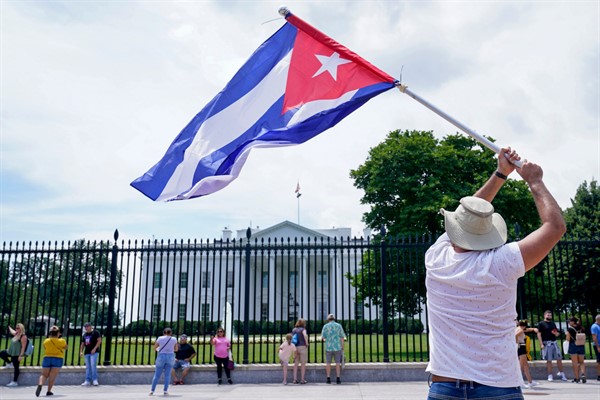On Sunday July 11, Cuba was rocked by an unprecedented public display of opposition as thousands of people joined nationwide demonstrations against the government. The largely spontaneous outbursts underscored the depth of Cuba’s social and economic crisis and pose a huge challenge to President Miguel Diaz-Canel and the ruling Communist Party. They have also forced the issue of Cuba to the top of U.S. President Joe Biden’s agenda.
The first demonstration began that morning in a park outside the Catholic Church of San Antonio de los Banos, a small town on the outskirts of Havana. By prior arrangement, several dozen people gathered to chant anti-government slogans and exhort onlookers. When they began marching, the demonstrators numbered fewer than a hundred, but as they paraded through the streets, chanting and stopping occasionally for speeches, they beckoned their curious neighbors to join them. People joined in by the hundreds, and in less than an hour, the crowd had swelled to well over a thousand.
The protesters were a cross-section of Cuban society, with all ages, genders and races represented. Apart from the anti-government slogans, the atmosphere was more festive than angry; participants chatted and laughed as they marched. One woman carried a tiny dog wearing a pink dress. Dozens of motorbikes joined the procession, honking their support. It seemed as though every fourth or fifth person was filming the spectacle with their smart phone and posting it to social media.

